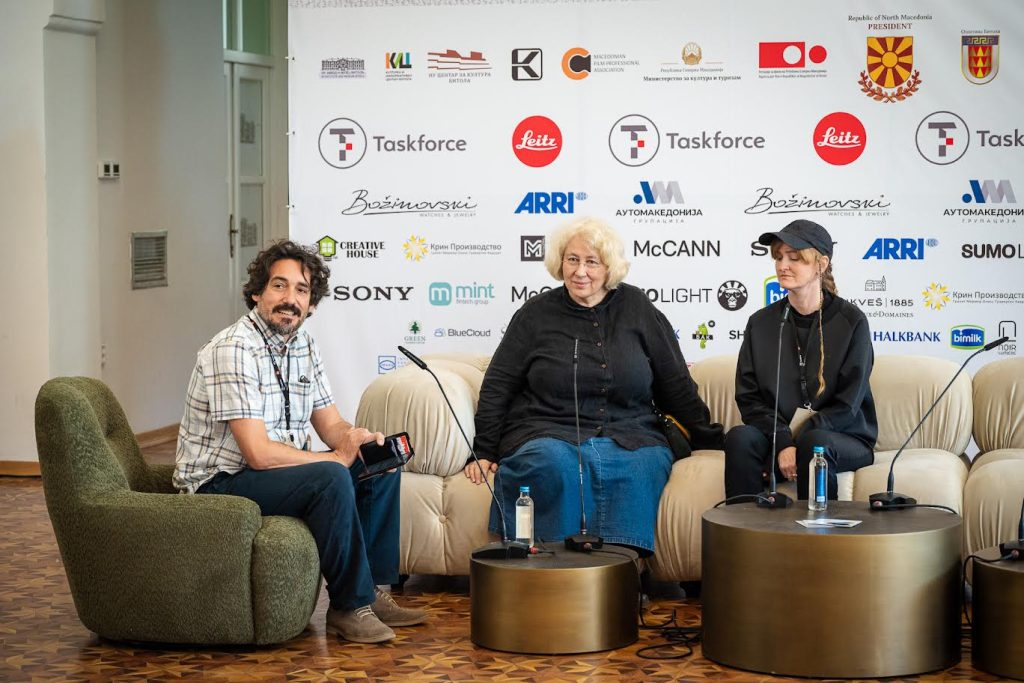Jolanta Dylewska: I keep thinking about how different cinematic art would have been if a woman had been involved in its creation from the very beginning

The focus on the face is very important in the career of Jolanta Dylewska, this year`s winner of the Special Camera 300 Award for Outstanding Contribution to Filmmaking. The film „Tulpan“, directed by Dilewska, was screened at the Manaki Brothers ICFF last night, and she spoke at today`s press conference about her focus on the faces of people and animals and why it is so important to her and to women cinematographers; she also reflected on the significance of the award presented to her at the opening ceremony.
„I would like to point out that Michal Dymek and I graduated from the Polish National Film Academy. When I came to study at the Academy, no one believed it was possible for a woman to be a cinematographer. Only one professor, the famous Polish cinematographer, Jerzy Wójcik, believed in me and we created a strong connection as a student and a teacher. He had a holistic approach and taught us that the camera captures both what is seen and what is not seen. I approach faces like approaching a mirror through which time passes. I think the most interesting thing is the person in front of the camera, regardless if it`s a documentary or a feature movie“, Dilewska said.
She also added that the award was very important to her and wanted to say how she felt when she received the call by the director of the Manaki Brothers ICFF who told her she was the recipient of the award.
„I started thinking about what cinematography would have looked like if the Manaki brothers had a sister. How different would cinematic art look if a woman had participated in the creation from the very beginning.From the moment they put the camera to record, the visual history of the world was created. From the beginning it was a man`s job and I wonder how different it would have if the Manaki brothers had a sister. I really regret that it did not happen“, Dilewska said, pointing out that she disagreed with the notion that women cinematographers could not work because the camera in the past was too heavy.
She added: „I was always watched by my older male colleagues when I was working and constantly they looked at me with distrust", she also explained that now things have changed and there are a lot of young women who are choosing this path.
The cinematographer of „The Girl with the Needle“, Michal Dymek, told reporters after yesterday`s screening that they had a very long preparatory period and decided to focus on beautiful details, to follow the dynamics of the story which is very intuitive.
The filming started in Denmark, then Sweden came in as a co-producer and Poland as a co-producer and the whole thing was moved to Poland because of the small budget.
„The whole time we were shooting, there was an open and constant communication between the actress and the director. Magnus portrayed a woman`s story from a male perspective. It tells a very difficult topic that certainly affected all of us, and after the shoot we all had a little bit of a break“, Dymek said.
Marko Brdar, the cinematographer of „Safe Place“ under the European Lo-Cap program, in the meeting with the journalists spoke about the theme of the film, given that it is a very disturbing film–an intimate story about the suicide of the author of the screenplay.
„I only knew the director as Jacob's brother, but when I found out he wanted to make a movie about this story, I immediately got involved and spent two years with him working on the film“, he said.

